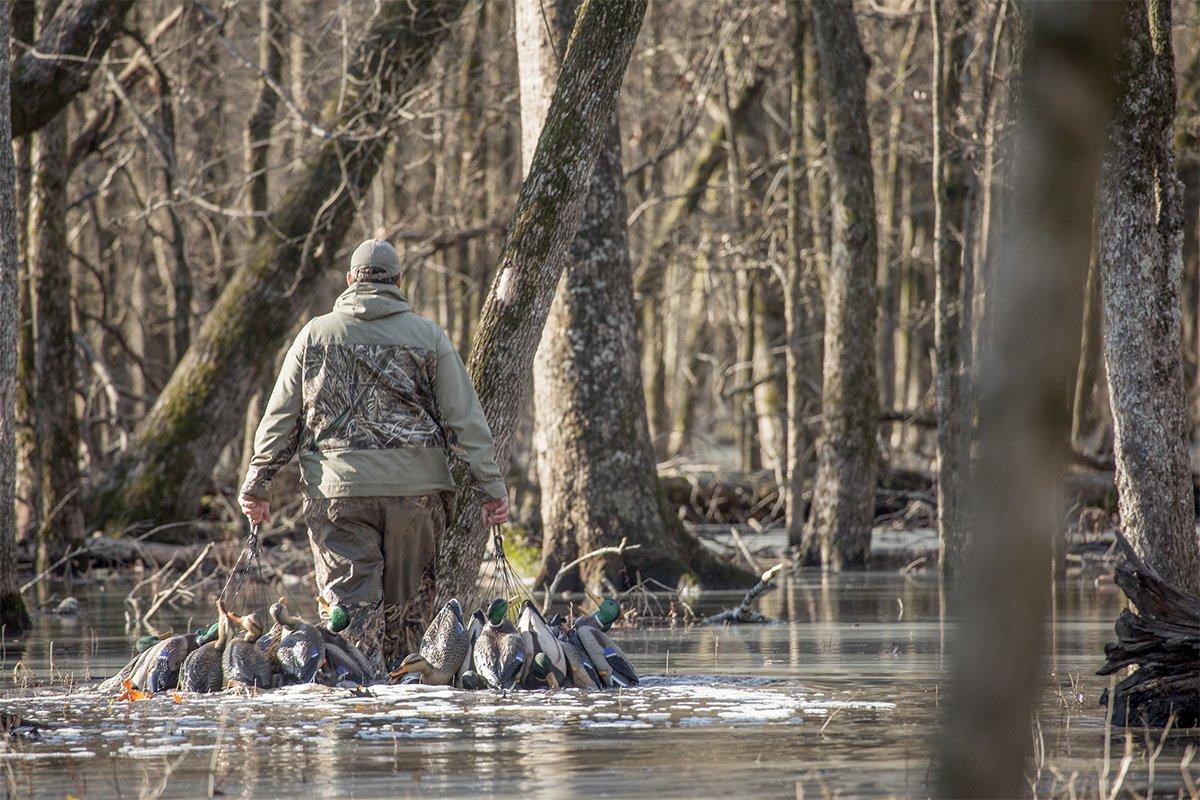Sometimes, Going Large or Tiny Makes a Huge Difference
Decoy setups often reflect the space in your boat, the amount of walking and lugging you're willing to accept, or the size of the water or field you plan to hunt. As a result, you commonly see spreads of two- to six-dozen blocks dotting America's marshes, lakes and corn stubble, and most days, such rigs work fine.
Sometimes, however, it makes more sense to use more or fewer decoys. Let's look at some situations that demand a micro or macro approach.
Divers
Small spread: Big-water gunning for bluebills, redheads, canvasbacks and other diving ducks typically screams for lots of decoys. But I've experienced years when pressured late-season ducks — especially goldeneyes — responded much better to spreads of 12 to 18 blocks placed at strategic locations.
For this micro rig, a buddy and I placed one long line of about 12 whistler blocks to the left of a layout boat. Then we plopped a few super-magnum goldeneyes behind, in front and to the right of the hide. Finally, we used my buddy's homemade V-boards (painted as buffleheads) to hide the layout. The tiny spread produced much better results than our typical 80-plus-decoy multiple-line rig.
Big spread: Pretty simple. If the wind blows hard from the northwest and the barometer plunges, set every diver decoy you have off a likely point, island or shoreline. Provide maximum attraction for what might be a big migration day.
Geese
Small spread: Tiny early-season destinations, such as small fields or loafing ponds, beg for tiny rigs. Before the migration begins in earnest, locally nesting honkers are still in family groups, so it's wise to reflect that with your decoys. Find a hot 20-acre field of cut oats? Maybe place seven to 15 full-bodies in one or two groups. Most of them should be feeders, with a few loafers and three or four lookers mixed in. Remember, you're on the X. Make everything appear natural.
Big spread: When the migration hits and you're running traffic — that is, at a field between a roost and the X — resolve to set as many full-body honkers as possible. Supplement them with some rags, windsocks and silhouettes, too. Then, prepare to warm up the call. You want passing geese to believe they're missing the honker party of the year.
Puddlers
Small spreads: For heavily pressured mallards, blacks, pintails or other puddlers, consider location and situation before setting your rig. Often, skittish ducks feed or loaf in small, out-of-the-way potholes, ditches, springs or sheet water, especially late in the season. If you flush two-dozen mallards off a tiny marsh, re-create that situation the next morning by placing maybe a dozen blocks at that spot. Make the setup appear relaxed and natural. Ducks frequent that area for a reason, so you don't need 100 decoys to lure them in.
Big spread: Massive ag fields demand big spreads and lots of motion. Consider using nothing but honker decoys, as puddle ducks associate geese with food and safety in fields. Mix in several spinning-wing duck decoys to attract birds from afar. Again, don't be afraid to supplement your spread with some windsock or silhouette decoys to boost numbers.
Large and Small
Before you load the truck or boat this season, gauge every scenario to determine if it calls for a micro or macro approach. Often, you'll find those extremes produce much better than the same two- to six-dozen-decoy rig you — and the birds — have seen day after day.
Click here for more Realtree waterfowl hunting content. And check us out on Facebook.








